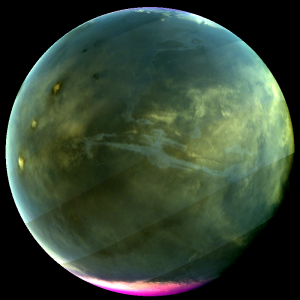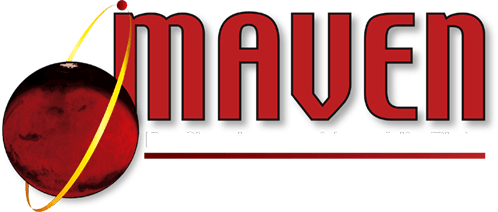Today, MAVEN has completed one Mars year of science observations. One Mars year is just under two Earth years.
MAVEN launched on Nov. 18, 2013, and went into orbit around Mars on Sept. 21, 2014. During its time at Mars, MAVEN has answered many questions about the Red Planet.
The spacecraft has made the following discoveries and science results:
- Most complete determination of the rate of loss of gas from the atmosphere to space and of how it is controlled by the sun, both during quiet times and during solar-storm events.
https://lasp.colorado.edu/maven/2015/11/05/maven-reveals-speed-of-solar-wind-stripping-martian-atmosphere - Most thorough and accurate determination of the rate of escape of atmospheric gas to space in present time.
https://lasp.colorado.edu/maven/2015/11/05/maven-reveals-speed-of-solar-wind-stripping-martian-atmosphere - Most thorough determination of how the sun controls the structure, composition, and variability of the Mars upper atmosphere, leading to escape of gas from the top of the atmosphere to space.
https://lasp.colorado.edu/maven/2015/11/05/maven-reveals-speed-of-solar-wind-stripping-martian-atmosphere - Discovery of a cloud of dust surrounding Mars that likely is interplanetary dust (debris from comets) that is falling in toward Mars.
https://lasp.colorado.edu/maven/2015/03/18/maven-detects-aurora-and-mysterious-dust-cloud-around-mars - Discovery of a layer of metal ions in the ionosphere that comes from the falling in of interplanetary dust.
https://lasp.colorado.edu/maven/2016/03/09/close-comet-flyby-threw-mars-magnetic-field-into-chaos - Discovery of diffuse aurorae that are widespread over the planet and that do not depend on the presence of a global or local magnetic field to focus the particles from the sun that drive them.
https://lasp.colorado.edu/maven/2015/05/14/auroras-on-mars - Detection of a “polar plume” of ions escaping to space that had not previously been seen.
https://lasp.colorado.edu/maven/2015/06/20/maven-results-find-mars-behaving-like-a-rock-star - A sharpened ultraviolet view of Mars was acquired when the Imaging Ultraviolet Spectrograph team took advantage of the higher data rates possible during the recent close passage between Earth and Mars to collect its highest resolution data.
https://lasp.colorado.edu/maven/iuvs-captures-sharpened-ultraviolet-view-of-mars/

“Taken together, the MAVEN results tell us that loss of gas from the atmosphere to space has been the major force behind the climate having changed from a warm, wet environment to the cold, dry one that we see today,” said Bruce Jakosky, MAVEN principal investigator, from the Laboratory for Atmospheric and Space Physics at the University of Colorado Boulder.
NASA recently declared that MAVEN had achieved mission success during its primary mission. Mission success means that the spacecraft operated as intended, made the expected science measurements, and achieved its proposed science objectives.
MAVEN has been approved for an additional two-year extended mission that will run through the end of September 2018.
All spacecraft systems and science instruments continue to operate as expected. Data is being collected and measurements are extending to a second Mars year and to a different phase in the eleven-year cycle of solar activity. The science team is implementing additional ways of operating the instruments to expand on the science achieved during the primary mission.
MAVEN’s principal investigator is based at the University of Colorado’s Laboratory for Atmospheric and Space Physics, Boulder. The university provided two science instruments and leads science operations, as well as education and public outreach, for the mission. NASA’s Goddard Space Flight Center in Greenbelt, Maryland, manages the MAVEN project and provided two science instruments for the mission. Lockheed Martin built the spacecraft and is responsible for mission operations. The University of California at Berkeley’s Space Sciences Laboratory also provided four science instruments for the mission. NASA’s Jet Propulsion Laboratory in Pasadena, California, provides navigation and Deep Space Network support, as well as the Electra telecommunications relay hardware and operations.
[addthis]

